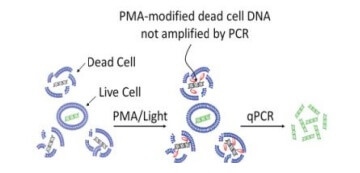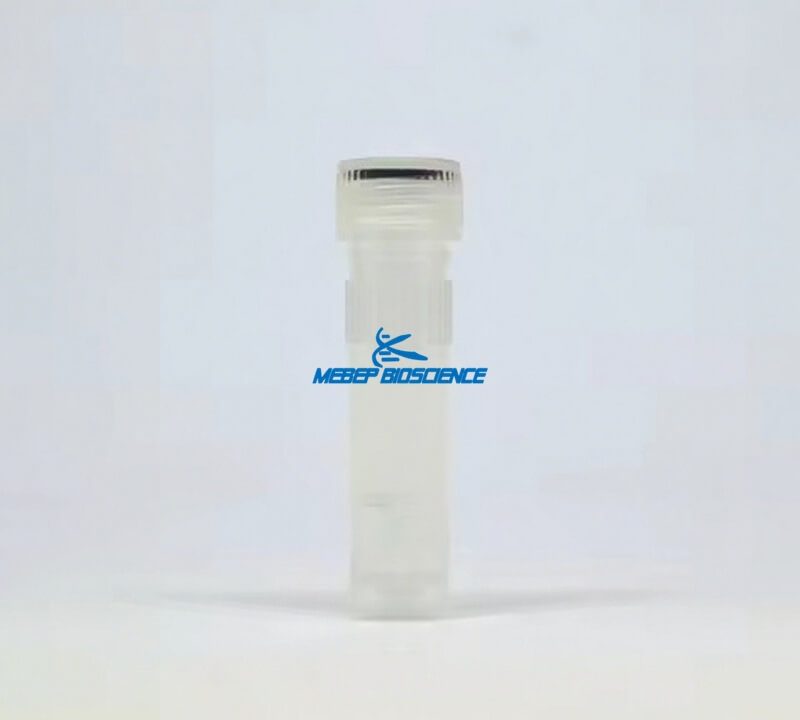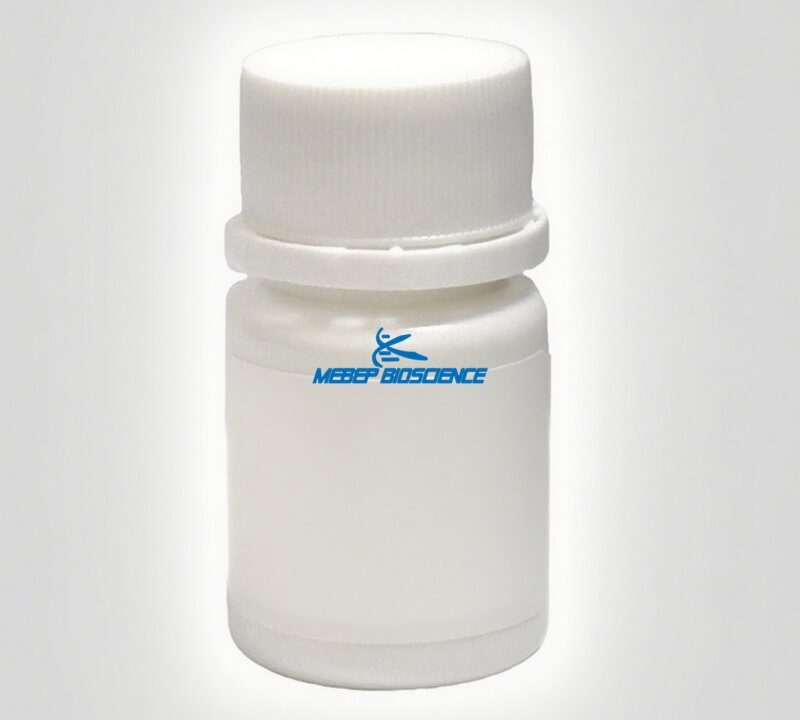
Mouse anti His Tag (McAb)
2025-07-09
Gelatin-Sepharose 4B
2025-07-09Product Number: BCPMA-1mg
Description
PMA is a DNA binding dye with high affinity. The dye itself has weak fluorescence, but it can emit brighter fluorescence after binding with nucleic acids. It especially has high affinity with double stranded DNA. PMA does not have cell membrane permeability, so it can selectively modify the DNA of dead cells with damaged membranes. After bllight (~464nm) photolysis of PMA modified DNA, the photoreactive azido group on PMA is converted into highly reactive azene radical, which reacts with any hydrocarbon moiety near the DNA binding site to form a stable covalent nitrogen carbon bond, resulting in permanent DNA modification (Figure 1). This modification process will make DNA insoluble and make it lost together with cell debris in the subsequent genomic DNA extraction process, thus hindering the PCR amplification of target DNA in dead cells. The unbound PMA remaining in the solution reacts with water molecules under strong light irradiation and decomposes into hydroxylamine compounds without cross-linking activity, so that hydroxylamine can no longer covalently bind DNA, thus not affecting PCR amplification. This feature enables PMA to detect a variety of sample types including bacteria, biofilms, yeast, fungi, viruses and eukarYOtic cells by real-time quantitative PCR (qPCR); Combined with qPCR, ngs, Sanger sequencing and lamp technology, it is widely used in food and water safety and environmental testing.

Application
Bacterial nucleic acid staining.
Product parameters
Product parameters:Deep red solid ; ex ( pH 3 ) = 464nm ( before photolysis ) ; ex / Em ( after photocrosslinking to nucleic acid ) = 510 / 610nm





